A Diffusion Sampler is a critical component in diffusion-based generative models, responsible for reconstructing structured data, such as images, audio, or even text, starting from random noise.
It reverses the diffusion process, systematically adding noise to training data. The sampler “denoises” this random input through learned patterns, step by step, until it outputs coherent and realistic data. This concept underpins the remarkable quality of recent generative models like Stable Diffusion and Imagen, establishing diffusion samplers as a core innovation in generative AI.
Diffusion Models
Diffusion models are generative frameworks structured around a two-phase process:
- Forward Process: Original data (e.g., images) is gradually corrupted by adding Gaussian noise across several steps, eventually transforming it into random noise.
- Reverse Process: A neural network is trained to learn the stepwise removal of this noise, effectively reconstructing the original input from the noisy version.
The diffusion sampler is the mechanism that drives this reverse (generative) process, applying the trained denoising model iteratively to convert noise into a high-fidelity output.
Sampling in Diffusion Models
Sampling refers to how new synthetic data is generated from a trained model. In diffusion models, this process is guided by a sampler, which orchestrates the denoising trajectory from pure noise to a plausible output.
The sampler’s design and implementation influence the model’s quality, fidelity, and computational efficiency. Sampling strategies vary in complexity, from fixed-step probabilistic methods to accelerated deterministic schemes, each balancing trade-offs between speed and realism.
How Diffusion Samplers Work
Diffusion samplers operate through an iterative denoising loop, typically encompassing the following phases:
- Initialization: The process begins with a randomly sampled noise vector, often drawn from a standard Gaussian distribution.
- Iterative Denoising: At each step, the sampler consults the learned denoising model to estimate and subtract the noise added during training. This is repeated over many steps, gradually revealing the data’s underlying structure.
- Termination: Once the final step is reached, the noise has been fully removed, resulting in a realistic data sample. Depending on the model and sampling technique used, the number of steps can range from a few dozen to several hundred.
The sampler’s efficiency determines how quickly and accurately this transformation occurs, with significant implications for real-time applications.
Types of Diffusion Samplers
Denoising Diffusion Probabilistic Models (DDPM)
DDPMs represent the foundational structure for diffusion models. They follow a fixed noise schedule for adding and removing noise, and require many steps (often 1000+) to achieve high-quality results. While robust, DDPMs can be computationally intensive and slow.
Denoising Diffusion Implicit Models (DDIM)
DDIMs introduce non-Markovian sampling, allowing the process to be deterministic and reducing the number of steps required to generate samples. This significantly improves inference speed without compromising much on output quality, making DDIMs popular in practical deployments.
Latent Diffusion Models (LDM)
LDMs operate in a compressed latent space instead of pixel space. By performing diffusion in this smaller representation, LDMs reduce computational load and enable high-resolution generation with less memory usage. This innovation powers models like Stable Diffusion, enabling consumer-grade GPUs to generate art-quality images.
Score-Based Generative Models
These models rely on score functions, gradients of the data’s log-probability density to guide the denoising trajectory. Instead of relying on discrete steps, they often employ stochastic differential equations (SDEs) to simulate the continuous noise-removal process. This approach is mathematically elegant and offers fine-grained control over the generation path.
Applications of Diffusion Sampler
Diffusion samplers are now used across a growing spectrum of AI-driven creative and analytical tasks:
- Image Generation: Producing photorealistic or stylistic images from prompts, sketches, or semantic maps. Models like Stable Diffusion, DALL·E 2, and Midjourney all rely on diffusion samplers.
- Audio Synthesis: Creating lifelike speech or music. Systems like DiffWave and AudioLDM use diffusion to generate audio from noise inputs or text prompts.
- Text Generation: Though more experimental, diffusion-based language models are being explored as alternatives to autoregressive models like GPT.
- Data Imputation: Filling in missing or corrupted parts of data (e.g., image inpainting, audio repair), using the model’s ability to infer structure from noisy input.
Challenges
Computational Intensity
The sampling process typically involves dozens or hundreds of steps, demanding significant computational resources, especially for real-time applications.
Sampling Speed
Generation is slower than GANs or autoregressive models, limiting use cases like live content generation or streaming interactions.
Complexity in Design
Crafting efficient, accurate samplers requires a deep understanding of stochastic processes, noise schedules, and mathematical optimization.
Recent Developments
Accelerated Sampling
New algorithms such as DDIM, FastDiff, and Progressive Distillation aim to reduce the number of required steps while maintaining sample quality.
Hybrid Models
Integrating diffusion with transformers, GANs, and VAEs has led to models that inherit the strengths of each, combining speed, fidelity, and scalability.
Conditional Sampling
Techniques for conditioning the sampler on auxiliary data, like class labels, text descriptions, or style cues, have improved controllability and creative flexibility.
Integration in Commercial Tools
Diffusion samplers have already been integrated into consumer and enterprise-level products. Popular platforms like RunwayML, Adobe Firefly, Midjourney, and Canva’s AI tools all leverage variants of diffusion sampling behind the scenes. These tools allow non-technical users to generate professional-grade visuals with natural language prompts or image inputs, expanding creative potential across industries.
In enterprise AI workflows, diffusion-based samplers are used for synthetic data generation, drug discovery, and material design, especially where accuracy and data realism are crucial.
Future Outlook
As the technology matures, we can expect diffusion samplers to become:
We’ll see real-time use cases like live design and gaming become viable through research into fewer-step samplers. With context-aware and goal-driven sampling, models will better align outputs with user intent. Open-source frameworks like Hugging Face Diffusers and simplified APIs are already making diffusion sampling available to developers at all levels.
In the coming years, diffusion samplers will likely evolve beyond visual domains, playing a central role in multi-modal AI that blends text, audio, images, and 3D environments in unified generative systems.

